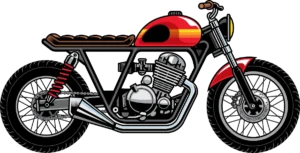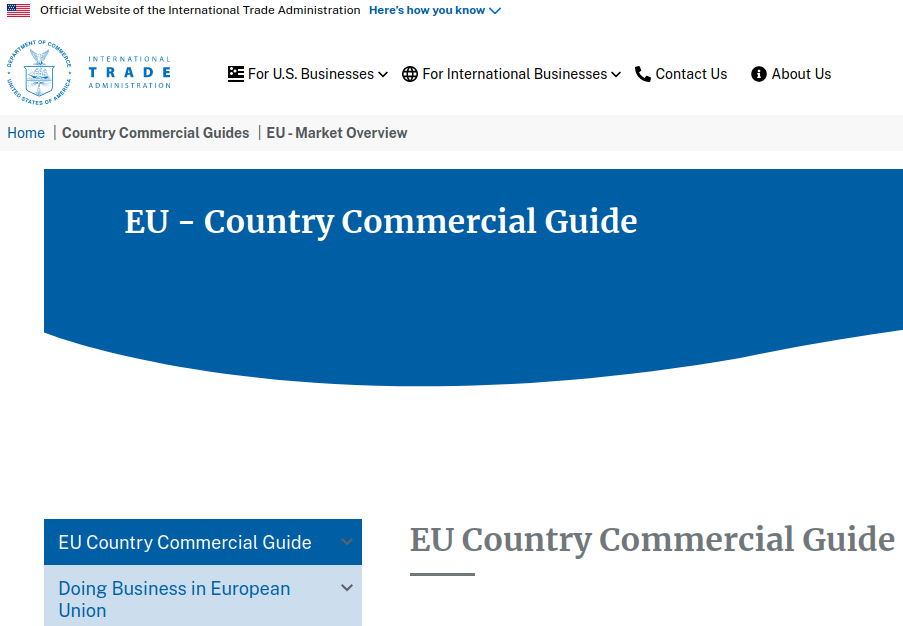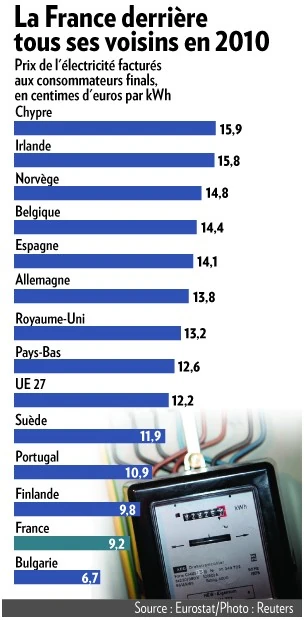The previous chapter: How to define a market: Economists versus Marketers, uses Go2Roues.com as an example. Go2Roues illustrates well how to define the market for “electric scooters and motorcycles”.
*Source : “Note on Market Definition and Segmentation”; Harvard Business School 9-579-083
The 4 dimensions of a Market
30 minute-read
Here, Go2Roues uses a product dimension. Because, electric scooters and motorcycles are vehicles used mainly in urban areas, Go2Roues could also have defined its market using the geographical dimension: the urban market.
In addition, when Go2Roues showcases users of electric scooters and motorcycles, they choose people who all share common characteristics. Those caracteristics are: age, dress code, etc. This is why Go2Roues could also have used the type of client dimension to define its market.
Finally, Go2Roues selling its electric vehicles through its website could also have defined its market using the steps in production-distribution system dimension. In this case: the online market for electric two-wheeled vehicles.
Go2Roues’ choice is the result of a strategic decision. It is the Marketing Manager who decides which type of market the product will play in. That decision will impact the product quality, its price level, its distribution network as well its promotion type.
This chapter defines a market according to 4 different criteria or dimensions: the product dimension, the geographical dimension, the type of client dimension, and the steps in production-distribution system dimension.
Build your café-racer!

Take quizzes. Earn points. Obtain motorcycle parts. Build your café-racer, and get the Café-Racer badge.

The Product dimension
The product dimension is built on two pillars.
The first pillar is Product functionality.
⇒ Product functionality is used to describe what the product is meant to do.
For example, if the phone no longer requires to be hooked to a landline it can be labeled “mobile”. That phone becomes part of the Mobile Phone Market. This is a basic but useful approach to market definition.

Truism
Customers acquire product benefits, not product functionalities.
A product functionality makes it possible for a product to deliver a product benefit.
Technology is the second pillar of the product dimension.
⇒ Companies willing to show their products offer the latest technology available or in fashion, will adopt this approach.
For example the Music Player.


In the Spotify for Podcasters example, Spotify is launching a new service. Underneath the “Get started” call to action, are icons each representing a service meant to broadcast.
Also, on top in the green banner, Spotify displays a message about Anchor, another technological solution.
Philip Kotler
No company in its right mind tries to sell to everyone.

The Type of Client dimension
To define a market by its type of clients is to constitute homogeneous groups of potential buyers.
⇒ This approach is preferred by customer-centric companies.
Some very large companies sell products to many different types of consumer groups. This is usually because such companies are able to draw synergies between their different business units.
Customer-centric
A customer-centric company focuses on offering a quality experience to its customers, rather than simply a price.
To do so, the company will try to identify the customer’s desires, wants, and habits.
Microsoft illustrates on its website how it caters to various groups of consumers.
In the example below taken from the Microsoft website, Microsoft addresses both consumers with its Xbox and businesses with its professional line.

But, not all companies have the resources of a Microsoft. And so, most companies will need to choose. Some will focus on a B2B market (business to business). Others will focus on the B2C market (business to consumer). And some might go even narrower.
Narrowing down the customer group enables to better focus on the customer need, or desires and wants. This enables to propose an almost tailor made solution. Microsoft follows this approach when guiding the customer in choosing a PC.
Truism
Identifying the type of client to sell to is the Entrepreneurs’ and the Digital Marketers’ preferred approach. Digital Marketers call this identifying your avatar.

The Geographical Dimension
The Geographical dimension can be structured around one of the following 4 topics:
A political entity with common rules is a frequent approach to defining a market geographically. A typical example of a market defined by its geographical dimension is the European Union.
For instance, on its official website the European Union (EU) presents itself as a “single market of 27 member countries“.
And at no surprise, the International Trade Agency (ITA) labels the EU a country. The ITA is an American agency. It advises American companies willing to export to the EU.


Defining a market around logistics.
⇒ The logistics dimension can be used to build an entire industry from scratch.
Logistics are a set of choices by which Supply is presented to Demand in a market in a structured fashion.
The example of the bicycle sharing industry in China shows how the regulator had to step in to bring some order. In its “How China is coping with its piles of abandoned shared bikes” article for the China Global Television Network, Yu Jing mentions a predicted “160,000 tonnes of solid waste” generated by abandoned bicycles in China in 2020.
The regulator had to set some rules for the users or the Demand side, and also for the Supply side. Rules include: where and how to park the bicycle, how to dispose of broken bicycles, etc.

Choosing to define a market around legal matters.
⇒ Or establishing legal rules as too what can be done in a market, how it can be done, and for whom it is done. This is called the Command Process.
Command process
Command process: The use of central planning and the directives of government authorities to answer the question of what, how, and for whom.
Source: Managerial Economics, Paul Keat, and Philip Young, Prentice Hall.
Directive 96/92/EC of the European Parliament and of the Council of 19 December 1996 concerning common rules for the internal market in electricity.
Official Journal L 027 , 30/01/1997 P. 0020 – 0029
THE EUROPEAN PARLIAMENT AND THE COUNCIL OF THE EUROPEAN UNION,
Having regard to the Treaty establishing the European Community, and in particular Article 57 (2), Article 66 and Article 100a thereof,…
HAVE ADOPTED THIS DIRECTIVE:
CHAPTER I
Scope and definitions
Article 1
This Directive establishes common rules for the generation, transmission and distribution of electricity. It lays down the rules relating to the organization and functioning of the electricity sector, access to the market, the criteria and procedures applicable to calls for tender and the granting of authorizations and the operation of systems.
As in the case of the Directive 96/92/EC, it is the European regulator who establishes the rules of the game on the market. Here, the internal market in electricity.
In the case of a sovereign nation, it is the legislator who establishes those rules. For the European Union, the regulator is the European Commission.

In the case of the internal market in electricity, the rules are chosen to set a framework for the market. Therefore, the rules represent a clear political orientation.
Choosing to define a market around taxation.
⇒ Or boosting an entire industry through fiscal incentive and investment orientation
In his WSJ article dated April 28, 2023, Will Horner describes how the efforts put forward by the Biden administration have helped leap-frogg the American Hydrogen market to a point where Europe’s supremacy may feel threatened.

The European Union has been an early adopter of new low-carbon technologies such as hydrogen electrolyzers, electric vehicles and solar power. However, it has been slow to respond to the Biden administration’s Inflation Reduction Act, which earmarked $369 billion for green energy programs. The U.S. now offers straightforward, generous tax credits to clean hydrogen producers while the EU took many months to work out the details of its incentives which generally involve more red tape.
The WSJ article highlights the role tax incentives and investment orientation play in spuring projects that will shape the burgeoning hydrogen market.
Defining a market around living standards.
⇒ Or turning a weakness into a strength.
In the example below, focusing on people’s living standards enabled to get a precise understanding of the situation. In sub-Saharan Africa, people had:
- No access to basic financial services,
- No access to broadband (high-speed) internet,
- But, a high ownership level of mobile phones.
And to provide financial services to people living in that area becomes more easily approached.
In the podcast “Fintech: Breaking Down Barriers in Africa“, Amadou Sy tells the story of how the International Monetary Fund (IMF) helped turn sub-Saharan Africa into the global leader in mobile money transfer services.
International institutions are not the only ones to use the living standards approach to unveil opportunities. Listen to Viola Llewellyn explain how deeply she actually goes into understanding living standards to develop her start-up.

The steps in production-distribution system dimension
This market definition approach describes the “sequence of levels of production and distribution in which a business unit operates” according to Professor Robert D. Buzzell in his “Note on Market Definition and Segmentation”.
⇒ This approach is used to build a long term strategy, by exercising control at every level of the production-distribution level.
Building or bringing down an entire economic sector!
When creating the framework for a European internal electricity market, the European Commission has clearly sought to identify whether the levels of production-distribution of electricity could be treated separately. In its Directive 96/92/EC, the European authorities identify the production-distribution levels as being:
- the generation of electricity
- the transmission of electricity
- the distribution of electricity
Philip Kotler
You don’t sell to distributors. You sell through them and with them.
Directive 96/92/EC of the European Parliament and of the Council of 19 December 1996 concerning common rules for the internal market in electricity.
Official Journal L 027 , 30/01/1997 P. 0020 – 0029
…
CHAPTER I
Scope and definitions
Article 1
This Directive establishes common rules for the generation, transmission and distribution of electricity…
Article 2
For the purposes of this Directive:
1. ‘generation` shall mean the production of electricity;
2. ‘producer` shall mean a natural or legal person generating electricity;
…
5. ‘transmission` shall mean the transport of electricity on the high-voltage interconnected system with a view to its delivery to final customers or to distributors;
6. ‘distribution` shall mean the transport of electricity on medium-voltage and low-voltage distribution systems with a view to its delivery to customers;
…
This European approach has led to a deregulation of national markets and the dismantling of national champions in countries that abided by the rule. The most significant example being France and its national champion, state owned monopoly: EDF or Electricité de France.
Created after World War 2, EDF was established as a state-owned monopoly. In 2010, EDF had managed to ensure the energy autonomy of France, and also to supply electricity at one of the lowest prices in Europe: 9,2 cents of a Euro per kWh according to Eurostat. EDF was also exporting to Europe.
In 2009, EDF was the 1st European Electricity producer and distributor. Henri Proglio became CEO at that time.
In January 2023, the French consumer was charged 15,2 cents of a Euro per kWh. An almost 66% increase in price in 12-13 years! And in the same time, the French were asked to drastically lower their electricity consumption to avoid any power shortage.

Kotler Quote
You don’t sell through price. You sell the price.
In France, in 2023, this disastrous situation is considered by some as an act of sabotage and a parliament report has concluded to step back from any European framework. As a result, the European Commission is under pressure to “reform the market“.
In December 2022, Proglio, former CEO, was asked to testify in front of an Inquiry Commission organized by the French parliament “Assemblée Nationale”. The purpose was to investigate how France had lost its energy independence.
In the YouTube video, Proglio describes at minute 6:38 how in 1945-46 the French government decides that electricity is of strategic importance. Electricité de France ( EDF) is created with 3 objectives:
- achieve the energy independence of France
- enable the economic independence of France
- ensure the supply of electricity to all at an affordable price, or as a public service.
At minute 9:20, Proglio describes how EDF was set up as an integrated system including: production, transportation and distribution of electricity.
And Proglio goes on: “everything was working according to the 1945-46 plan, and then “they” decided to fix it”.
Philip Kotler
Underestimating chaos can lead to strategies that neither defend a company against its vulnerabilities nor allow it to take advantage of the opportunities arising from chaos.
A strategic move even start-ups can make
On a more positive forward-looking note, defining your market according to the steps in production-distribution can be a life changer for a small company. Take the quiz and see how AHLAVACHE.fr has successfully integrated production and distribution.
Kotler Quote
There is no such thing as a commodity. It is simply a product waiting to be differentiated.